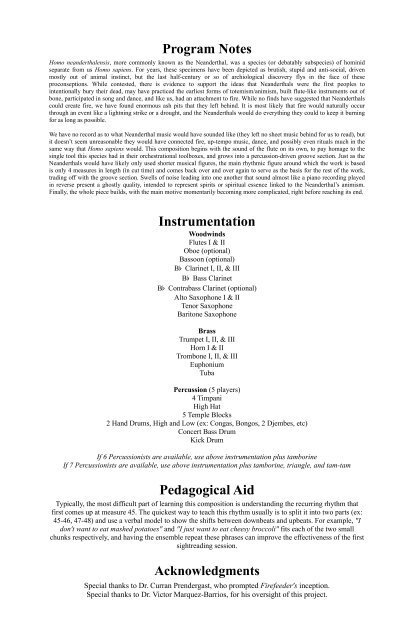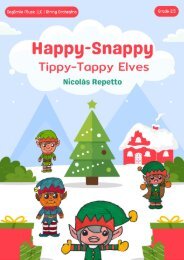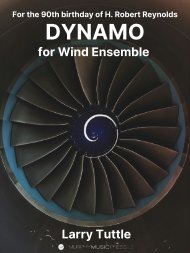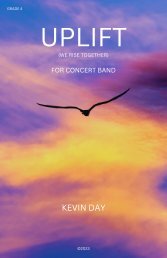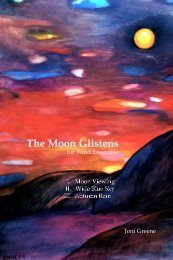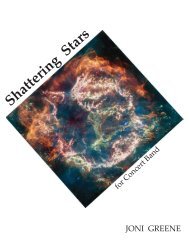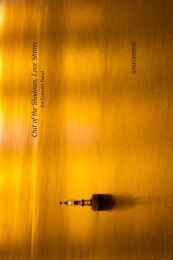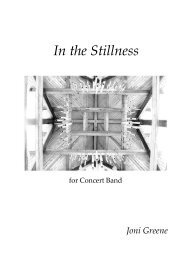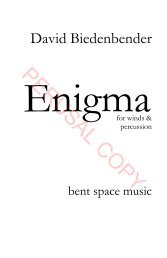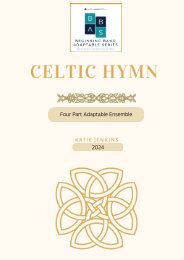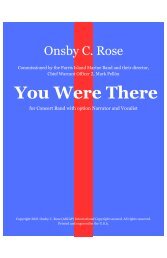Create successful ePaper yourself
Turn your PDF publications into a flip-book with our unique Google optimized e-Paper software.
Program Notes<br />
Homo neanderthalensis, more commonly known as the Neanderthal, was a species (or debatably subspecies) of hominid<br />
separate from us Homo sapiens. For years, these specimens have been depicted as brutish, stupid and anti-social, driven<br />
mostly out of animal instinct, but the last half-century or so of archiological discovery flys in the face of these<br />
proconseptions. While contested, there is evidence to support the ideas that Neanderthals were the first peoples to<br />
intentionally bury their dead, may have practiced the earliest forms of totemism/animism, built flute-like instruments out of<br />
bone, participated in song and dance, and like us, had an attachment to fire. While no finds have suggested that Neanderthals<br />
could create fire, we have found enormous ash pits that they left behind. It is most likely that fire would naturally occur<br />
through an event like a lightning strike or a drought, and the Neanderthals would do everything they could to keep it burning<br />
for as long as possible.<br />
We have no record as to what Neanderthal music would have sounded like (they left no sheet music behind for us to read), but<br />
it doesn’t seem unreasonable they would have connected fire, up-tempo music, dance, and possibly even rituals much in the<br />
same way that Homo sapiens would. This composition begins with the sound of the flute on its own, to pay homage to the<br />
single tool this species had in their orchestrational toolboxes, and grows into a percussion-driven groove section. Just as the<br />
Neanderthals would have likely only used shorter musical figures, the main rhythmic figure around which the work is based<br />
is only 4 measures in length (in cut time) and comes back over and over again to serve as the basis for the rest of the work,<br />
trading off with the groove section. Swells of noise leading into one another that sound almost like a piano recording played<br />
in reverse present a ghostly quality, intended to represent spirits or spiritual essence linked to the Neanderthal’s animism.<br />
Finally, the whole piece builds, with the main motive momentarily becoming more complicated, right before reaching its end.<br />
Instrumentation<br />
Woodwinds<br />
Flutes I & II<br />
Oboe (optional)<br />
Bassoon (optional)<br />
Bb Clarinet I, II, & III<br />
Bb Bass Clarinet<br />
Bb Contrabass Clarinet (optional)<br />
Alto Saxophone I & II<br />
Tenor Saxophone<br />
Baritone Saxophone<br />
Brass<br />
Trumpet I, II, & III<br />
Horn I & II<br />
Trombone I, II, & III<br />
Euphonium<br />
Tuba<br />
Percussion (5 players)<br />
4 Timpani<br />
High Hat<br />
5 Temple Blocks<br />
2 Hand Drums, High and Low (ex: Congas, Bongos, 2 Djembes, etc)<br />
Concert Bass Drum<br />
Kick Drum<br />
If 6 Percussionists are available, use above instrumentation plus tamborine<br />
If 7 Percussionists are available, use above instrumentation plus tamborine, triangle, and tam-tam<br />
Pedagogical Aid<br />
Typically, the most difficult part of learning this composition is understanding the recurring rhythm that<br />
first comes up at measure 45. The quickest way to teach this rhythm usually is to split it into two parts (ex:<br />
45-46, 47-48) and use a verbal model to show the shifts between downbeats and upbeats. For example, " I<br />
don' t want to eat mashed potatoes" and " I just want to eat cheesy broccoli" fits each of the two small<br />
chunks respectively, and having the ensemble repeat these phrases can improve the effectiveness of the first<br />
sightreading session.<br />
Acknowledgments<br />
Special thanks to Dr. Curran Prendergast, who prompted Firefeeder' s inception.<br />
Special thanks to Dr. Victor Marquez-Barrios, for his oversight of this project.


